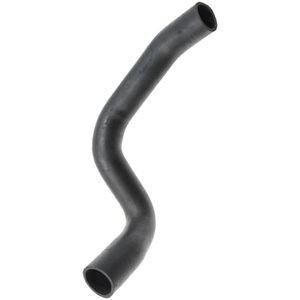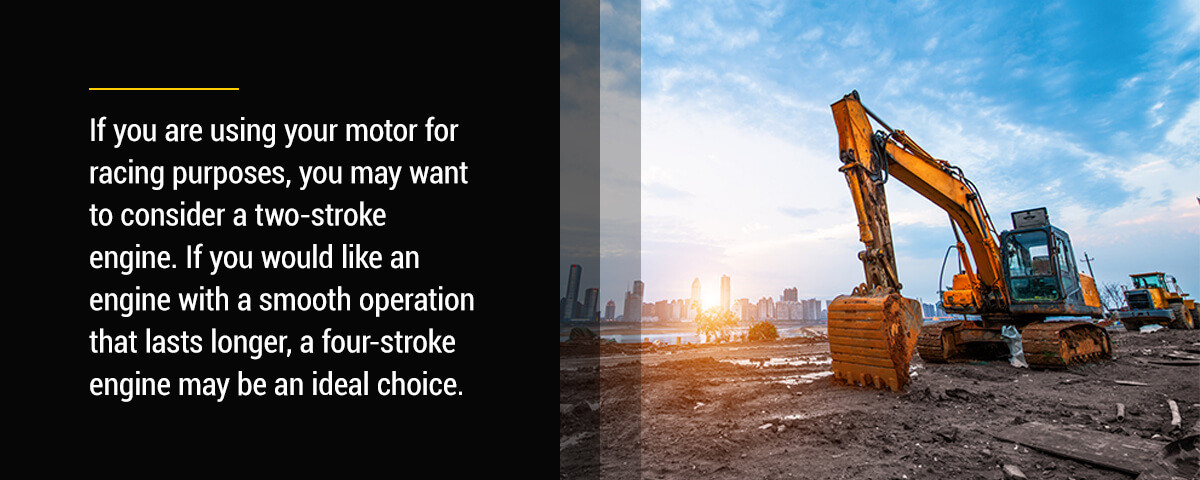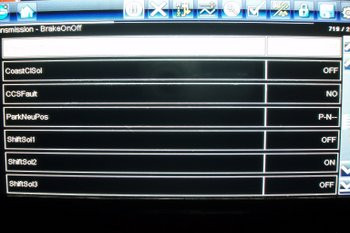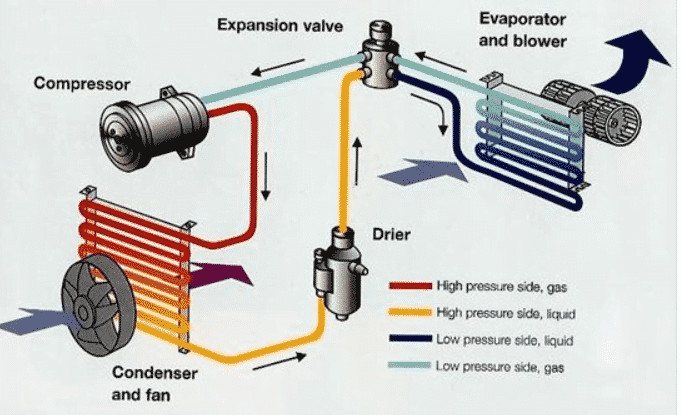How to Check Seat Belts With Integrated Automatic Tensioners?
Are you wondering how to check seat belts with integrated automatic tensioners to ensure your safety? This comprehensive guide from CARDIAGTECH.NET will walk you through the process, helping you maintain your vehicle’s safety systems. Discover how to inspect these vital components and keep your loved ones safe on the road, plus learn about the essential tools you might need, and where to find them.
1. What are Seat Belts with Integrated Automatic Tensioners?
Seat belts with integrated automatic tensioners are advanced safety devices designed to minimize slack in the seat belt in the event of a collision. These systems proactively tighten the seat belt, ensuring the occupant is held firmly in place. According to a study by the National Highway Traffic Safety Administration (NHTSA), automatic tensioners can significantly reduce the risk of chest injuries in frontal crashes.
These tensioners typically use sensors to detect a collision and then rapidly retract the seat belt, removing any looseness. This helps to prevent the occupant from moving too far forward, reducing the risk of contact with the steering wheel, dashboard, or windshield.
- Pre-tensioners: Tighten the seat belt at the start of a collision.
- Load limiters: Release a controlled amount of seat belt webbing to reduce the force on the occupant’s chest.
2. Why is it Important to Check Seat Belts?
Checking your seat belts regularly is crucial for ensuring they function properly in an accident. A worn or damaged seat belt may not provide the necessary protection, increasing the risk of injury. The World Health Organization (WHO) reports that seat belts reduce the risk of fatal injuries to front seat occupants by up to 50%.
Regular inspections can identify issues such as fraying, cuts, or malfunctions in the automatic tensioning system. Addressing these problems promptly can save lives. Furthermore, neglecting seat belt maintenance can lead to legal consequences, as many jurisdictions require seat belts to be in good working order.
- Safety: Ensures optimal protection during a crash.
- Legal Compliance: Avoid fines and ensure your vehicle meets safety standards.
- Peace of Mind: Knowing your safety systems are functioning correctly.
3. What are the Main Components of Seat Belts with Automatic Tensioners?
Understanding the main components will help you perform a thorough inspection. These parts work together to provide maximum safety.
| Component | Description |
|---|---|
| Seat Belt Webbing | The fabric portion of the seat belt that restrains the occupant. |
| Buckle Assembly | The part that connects and locks the seat belt. |
| Retractor Mechanism | Stores the seat belt webbing and allows it to extend and retract. |
| Automatic Tensioner | Tightens the seat belt during a collision. |
| Sensors | Detects a collision and activates the automatic tensioner. |
| Load Limiter | Releases webbing to reduce chest force. |
4. What Tools Do You Need to Check Seat Belts?
Having the right tools on hand makes the inspection process easier and more effective. Here’s a list of essential tools you might need:
- Flashlight: For inspecting hard-to-see areas.
- Mirror: To check the back of the retractor mechanism.
- Torque Wrench: To tighten bolts to the correct specification.
- Socket Set: To remove and install seat belt components.
- Multimeter: To test the electrical connections of the sensors.
- Diagnostic Scan Tool: To check for error codes related to the SRS (Supplemental Restraint System).
CARDIAGTECH.NET offers a wide range of diagnostic scan tools that can help you accurately assess your vehicle’s safety systems. Their user-friendly interfaces and precise readings ensure you can quickly identify and address any issues.
5. Step-by-Step Guide on How to Check Seat Belts
Follow these steps to thoroughly inspect your seat belts with integrated automatic tensioners.
5.1 Visual Inspection
Step 1: Check the Webbing:
Look for any signs of wear, such as fraying, cuts, or discoloration. Pay close attention to areas near the buckle and anchor points. Replace the seat belt if you find any damage.
Step 2: Inspect the Buckle:
Ensure the buckle clicks in smoothly and releases easily. It should not stick or require excessive force to operate.
Step 3: Examine the Retractor:
Pull the seat belt out completely and let it retract. The retractor should smoothly and quickly pull the belt back in. If it’s slow or doesn’t retract fully, it may need replacement.
5.2 Functional Test
Step 1: Test the Locking Mechanism:
Pull the seat belt out quickly. It should lock in place. If it doesn’t, the locking mechanism may be faulty.
Step 2: Check the Automatic Tensioner:
This is a more complex test and often requires specialized equipment. Some systems can be tested using a diagnostic scan tool to check for error codes and system functionality.
Step 3: Verify the Load Limiter:
Load limiters are designed to release webbing under high stress. Testing this function typically requires specialized equipment and is best left to professionals.
5.3 Using a Diagnostic Scan Tool
Step 1: Connect the Scan Tool:
Plug the diagnostic scan tool into the OBD-II port, usually located under the dashboard.
Step 2: Run a System Scan:
Select the SRS or airbag system in the scan tool menu and run a diagnostic scan.
Step 3: Interpret the Results:
Check for any error codes related to the seat belts or automatic tensioners. Refer to the vehicle’s service manual for code definitions and troubleshooting steps.
6. Common Issues with Seat Belts and How to Troubleshoot Them
Knowing the common issues can help you diagnose problems more effectively.
| Issue | Possible Cause | Troubleshooting Steps |
|---|---|---|
| Seat belt won’t retract | Dirty or damaged retractor mechanism | Clean the retractor or replace if necessary. |
| Buckle won’t latch | Debris or damage in the buckle | Clean the buckle with compressed air or replace if damaged. |
| Seat belt is frayed | Normal wear and tear | Replace the seat belt immediately. |
| Automatic tensioner not working | Faulty sensor or tensioner mechanism | Use a diagnostic scan tool to check for error codes. Inspect the wiring and connections. Replace faulty components. |
7. How Often Should You Check Your Seat Belts?
It’s recommended to check your seat belts at least twice a year, ideally during your spring and fall vehicle maintenance checks. However, if you notice any issues or if the seat belt has been used in an accident, inspect it immediately.
- Bi-annual Checks: During spring and fall maintenance.
- Post-Accident: Immediately after any collision, even minor ones.
- As Needed: If you notice any signs of wear or malfunction.
8. What Does the Law Say About Seat Belts?
Seat belt laws vary by state and country, but most jurisdictions require all occupants to wear seat belts. Failure to comply can result in fines and other penalties. Additionally, some laws require that seat belts be maintained in good working order.
According to the Insurance Institute for Highway Safety (IIHS), primary enforcement laws (where a driver can be stopped solely for not wearing a seat belt) are more effective at increasing seat belt use than secondary enforcement laws (where a driver can only be ticketed for not wearing a seat belt if they are stopped for another violation).
- Compliance: Know and adhere to your local seat belt laws.
- Maintenance: Ensure your seat belts are always in good condition.
- Safety First: Always wear your seat belt, regardless of the law.
9. How to Maintain Seat Belts for Longevity
Proper maintenance can extend the life of your seat belts and ensure they function correctly.
- Cleaning: Regularly clean the seat belt webbing with a mild soap and water solution.
- Inspection: Check for wear and tear regularly.
- Avoid Chemicals: Do not use harsh chemicals or solvents on the seat belts.
- Professional Service: Have your seat belts inspected by a professional mechanic periodically.
10. When Should You Replace Your Seat Belts?
You should replace your seat belts if you notice any of the following:
- Visible Damage: Fraying, cuts, or tears in the webbing.
- Malfunctioning Buckle: Difficulty latching or releasing.
- Retractor Issues: Slow or incomplete retraction.
- Post-Accident Use: If the seat belt was used during a collision.
- Error Codes: Diagnostic scan tool indicates a problem with the automatic tensioner.
11. The Role of CARDIAGTECH.NET in Ensuring Vehicle Safety
CARDIAGTECH.NET plays a vital role in ensuring vehicle safety by providing high-quality diagnostic tools and equipment. Their products help technicians and vehicle owners accurately diagnose and address safety-related issues, including those involving seat belts and automatic tensioners.
By offering advanced diagnostic scan tools, CARDIAGTECH.NET enables users to identify potential problems early, preventing accidents and saving lives. Their commitment to quality and innovation makes them a trusted partner in vehicle safety.
- High-Quality Tools: Diagnostic scan tools for accurate assessments.
- Expert Support: Knowledgeable staff to assist with product selection and troubleshooting.
- Commitment to Safety: Helping you maintain a safe vehicle.
12. Advanced Diagnostic Techniques for Automatic Tensioners
Diagnosing issues with automatic tensioners often requires advanced techniques and equipment. Here are some methods used by professionals:
| Technique | Description |
|---|---|
| Resistance Testing | Using a multimeter to measure the resistance of the sensor circuits. |
| Voltage Testing | Checking the voltage at the tensioner to ensure it is receiving the correct power. |
| Oscilloscope Analysis | Analyzing the waveform of the sensor signals to identify intermittent issues. |
| Deployment Simulation | Using specialized equipment to simulate a collision and test the activation of the tensioner. |
| Data Logging | Recording sensor data during a test drive to identify issues that only occur under specific conditions. |
13. How Automatic Tensioners Work: A Detailed Explanation
Automatic tensioners use a combination of mechanical and electrical components to enhance safety.
- Sensors: Detect a sudden deceleration indicative of a collision. These sensors send a signal to the control unit.
- Control Unit: Processes the signal and activates the tensioner.
- Tensioning Mechanism: Typically, a pyrotechnic device or a motor rapidly retracts the seat belt webbing, removing slack.
- Load Limiter: After the initial tensioning, the load limiter allows a controlled amount of webbing to release, reducing the force on the occupant’s chest.
14. Real-World Examples of Seat Belt Effectiveness
Numerous studies and real-world examples demonstrate the effectiveness of seat belts with automatic tensioners.
- Study by NHTSA: Found that automatic tensioners reduce chest injuries by up to 12% in frontal crashes.
- IIHS Data: Shows that states with primary enforcement seat belt laws have higher rates of seat belt use and lower rates of traffic fatalities.
- Accident Reconstruction: Demonstrates how seat belts with automatic tensioners prevent occupants from hitting the steering wheel or windshield.
15. The Future of Seat Belt Technology
Seat belt technology continues to evolve, with new innovations aimed at improving safety.
- Smart Seat Belts: Incorporate sensors to monitor the occupant’s position and adjust the tension accordingly.
- Active Buckles: Automatically tighten the seat belt when the vehicle starts.
- Integrated Airbags: Seat belts with built-in airbags to provide additional cushioning in a crash.
16. Understanding SRS (Supplemental Restraint System)
The SRS, or Supplemental Restraint System, includes airbags and seat belts with automatic tensioners. It’s crucial to understand how these systems work together to protect vehicle occupants. The SRS relies on a network of sensors and a central control unit to deploy the airbags and activate the seat belt tensioners in the event of a collision.
Malfunctions in the SRS can compromise the effectiveness of both the airbags and seat belts, so regular inspections and maintenance are essential.
17. DIY vs. Professional Inspection: What’s Right for You?
Deciding whether to inspect your seat belts yourself or hire a professional depends on your skills and comfort level.
DIY Inspection:
- Pros: Save money, learn about your vehicle, convenient.
- Cons: Requires knowledge and tools, potential for mistakes, may not identify all issues.
Professional Inspection:
- Pros: Thorough inspection, expert diagnosis, proper repairs.
- Cons: More expensive, requires scheduling an appointment.
For basic visual and functional checks, DIY can be sufficient. However, for more complex issues, such as diagnosing problems with the automatic tensioner, it’s best to consult a professional.
18. How to Find a Qualified Mechanic for Seat Belt Repairs
Finding a qualified mechanic is crucial for ensuring your seat belts are properly repaired.
- Ask for Recommendations: Get referrals from friends, family, or online reviews.
- Check Credentials: Ensure the mechanic is certified and has experience with SRS systems.
- Read Reviews: Look for online reviews and testimonials to gauge the mechanic’s reputation.
- Get a Quote: Obtain a detailed estimate before authorizing any repairs.
19. Maintaining Seat Belts in Classic and Vintage Cars
Maintaining seat belts in classic and vintage cars requires special attention.
- Originality: Preserve the original appearance while ensuring safety.
- Compatibility: Ensure replacement parts are compatible with the vehicle.
- Professional Restoration: Consider having the seat belts professionally restored.
20. Addressing Seat Belt Recalls
Seat belt recalls are issued when manufacturers identify a safety defect. If your vehicle is subject to a recall, it’s essential to have the issue addressed promptly.
- Check for Recalls: Visit the NHTSA website or contact your vehicle manufacturer to check for recalls.
- Schedule a Repair: Schedule a free repair at an authorized dealership.
- Follow Instructions: Follow any instructions provided by the manufacturer regarding the recall.
21. The Importance of Proper Seat Belt Fit
A properly fitted seat belt is crucial for maximizing safety.
- Positioning: The shoulder belt should cross the middle of your shoulder and chest.
- Lap Belt: The lap belt should fit snugly across your hips, not your stomach.
- Adjustment: Adjust the seat and steering wheel to ensure a comfortable and safe fit.
22. Debunking Common Seat Belt Myths
There are several myths surrounding seat belts that can compromise safety.
- Myth: Seat belts are uncomfortable.
- Fact: Modern seat belts are designed to be comfortable and adjustable.
- Myth: Seat belts trap you in a car after an accident.
- Fact: Seat belts are designed to release easily, and rescue workers are trained to quickly remove occupants.
- Myth: Seat belts aren’t necessary for short trips.
- Fact: Most accidents occur close to home.
23. Exploring the Psychology of Seat Belt Use
Understanding the psychology of seat belt use can help promote safer driving habits.
- Perceived Risk: People are more likely to wear seat belts when they perceive a higher risk of an accident.
- Social Norms: Social norms and peer pressure can influence seat belt use.
- Education: Education and awareness campaigns can increase seat belt use.
24. Understanding Different Types of Seat Belt Systems
There are several types of seat belt systems, each designed to provide a specific level of safety.
| Type | Description |
|---|---|
| 2-Point Seat Belt | A simple lap belt that fastens across the occupant’s waist. |
| 3-Point Seat Belt | Includes a lap belt and a shoulder belt for greater protection. |
| Automatic Seat Belt | Automatically fastens when the door is closed. |
| Integrated Seat Belt | Seat belt is integrated into the seat rather than the vehicle’s frame. |
| Seat Belts with Pre-tensioners | Tighten the seat belt at the start of a collision to reduce slack. |
| Seat Belts with Load Limiters | Release a controlled amount of seat belt webbing to reduce the force on the occupant’s chest. |
25. How to Choose the Right Seat Belt for Your Vehicle
Choosing the right seat belt for your vehicle is essential for safety and compatibility.
- Check Compatibility: Ensure the seat belt is compatible with your vehicle’s make and model.
- Consider Safety Features: Look for seat belts with pre-tensioners and load limiters.
- Read Reviews: Read reviews and testimonials to gauge the quality and performance of the seat belt.
26. Case Studies: Accidents Where Seat Belts Made a Difference
Numerous case studies highlight the life-saving benefits of seat belts.
- Case 1: A driver wearing a seat belt survived a high-speed collision with only minor injuries, while the unrestrained passenger sustained severe injuries.
- Case 2: A family wearing seat belts escaped a rollover accident with minor injuries, while an unrestrained occupant was ejected from the vehicle and suffered serious injuries.
27. Understanding Child Safety Seats and Seat Belt Use
Child safety seats are designed to protect children in the event of a collision. It’s essential to use the correct type of seat and install it properly.
- Choose the Right Seat: Select a seat that is appropriate for the child’s age, weight, and height.
- Install Properly: Follow the manufacturer’s instructions for installing the seat.
- Secure the Child: Ensure the child is properly secured in the seat.
28. The Environmental Impact of Seat Belt Production
Seat belt production can have an environmental impact, so it’s essential to consider sustainable practices.
- Material Selection: Choose seat belts made from recycled materials.
- Manufacturing Process: Support manufacturers that use eco-friendly processes.
- Recycling: Recycle old seat belts whenever possible.
29. Resources for Further Learning About Seat Belts
There are many resources available for learning more about seat belts and vehicle safety.
- NHTSA Website: Provides information on safety standards, recalls, and research.
- IIHS Website: Offers ratings and information on vehicle safety.
- Vehicle Manufacturer: Your vehicle manufacturer’s website or owner’s manual.
30. CARDIAGTECH.NET Customer Support and Services
CARDIAGTECH.NET is committed to providing exceptional customer support and services.
- Technical Support: Expert technicians available to answer your questions.
- Product Training: Training resources to help you get the most out of your diagnostic tools.
- Warranty: Comprehensive warranty coverage for peace of mind.
31. FAQs About Checking Seat Belts with Integrated Automatic Tensioners
Q1: How do I know if my seat belt has an automatic tensioner?
Automatic tensioners are typically found in newer vehicles and are part of the SRS. Check your owner’s manual or look for the SRS indicator light on your dashboard.
Q2: Can I replace my seat belt myself?
Replacing a seat belt can be done DIY, but it’s crucial to follow the manufacturer’s instructions and ensure the new seat belt is compatible with your vehicle. If you’re not comfortable, consult a professional.
Q3: How do I clean my seat belts?
Use a mild soap and water solution to clean the webbing. Avoid harsh chemicals or solvents.
Q4: What should I do if my seat belt won’t retract?
Check for any obstructions or debris in the retractor mechanism. If cleaning doesn’t help, the retractor may need replacement.
Q5: How often should I check my seat belts?
Check your seat belts at least twice a year, during your spring and fall maintenance checks.
Q6: What does the SRS light on my dashboard mean?
The SRS light indicates a problem with the Supplemental Restraint System, which includes airbags and seat belts with automatic tensioners. Have it checked by a professional mechanic.
Q7: Can I disable the automatic tensioner?
Disabling the automatic tensioner is not recommended, as it can compromise your safety in a collision.
Q8: What is a load limiter?
A load limiter releases a controlled amount of seat belt webbing to reduce the force on the occupant’s chest during a collision.
Q9: How do I know if my child safety seat is installed correctly?
Follow the manufacturer’s instructions and check for recalls. Many local fire departments and police stations offer free child safety seat inspections.
Q10: Where can I find replacement seat belts?
Replacement seat belts can be found at automotive parts stores, online retailers, or through your vehicle manufacturer.
32. Conclusion: Prioritizing Safety with Proper Seat Belt Maintenance
Ensuring your seat belts with integrated automatic tensioners are in good working order is crucial for your safety and the safety of your passengers. Regular inspections, proper maintenance, and timely repairs can save lives in the event of a collision.
By following the guidelines outlined in this guide and utilizing the high-quality diagnostic tools available at CARDIAGTECH.NET, you can take proactive steps to maintain your vehicle’s safety systems and drive with confidence. Remember, your safety is worth the investment.
Need help selecting the right diagnostic tools or have questions about seat belt maintenance? Contact CARDIAGTECH.NET today! Visit us at 276 Reock St, City of Orange, NJ 07050, United States, call us on Whatsapp at +1 (641) 206-8880, or visit our website at CARDIAGTECH.NET. Let us help you ensure your vehicle’s safety.
Alt text: Close-up of frayed seat belt webbing, highlighting the wear and tear that necessitates replacement for safety.
Alt text: Detailed view of a seat belt buckle assembly, emphasizing its locking mechanism and the importance of smooth operation for occupant safety.
Alt text: A diagnostic scan tool connected to a vehicle’s OBD-II port, used for checking error codes and system functionality related to seat belts and SRS.







